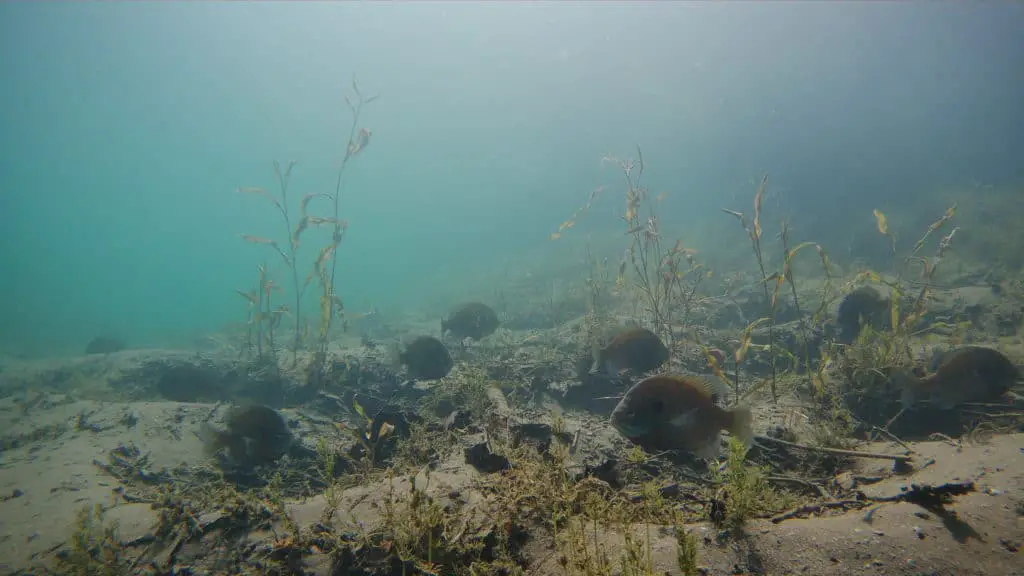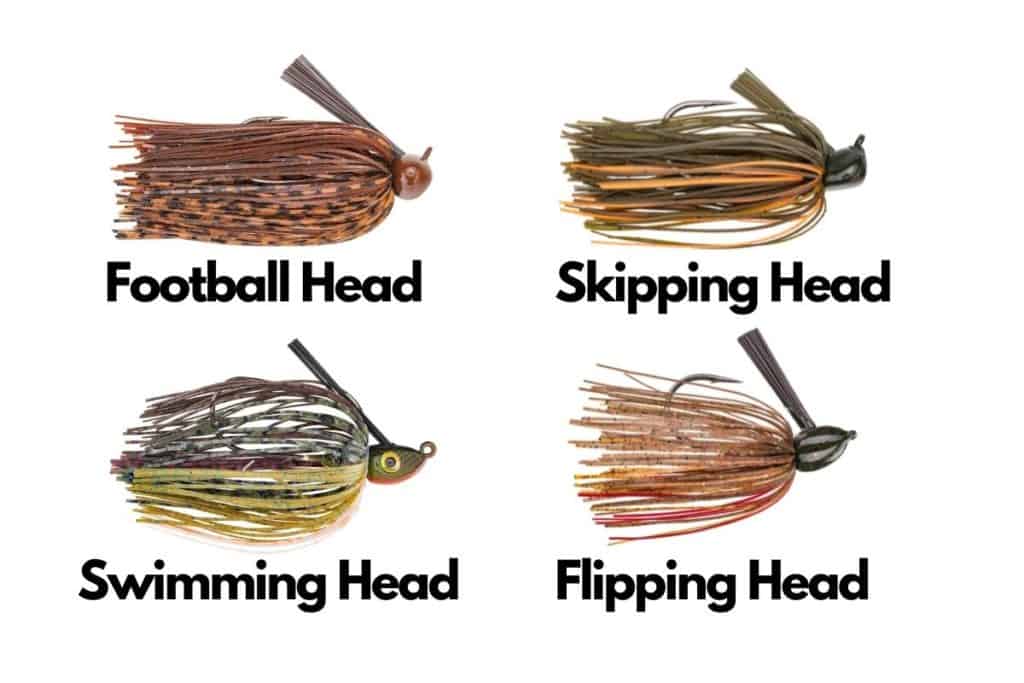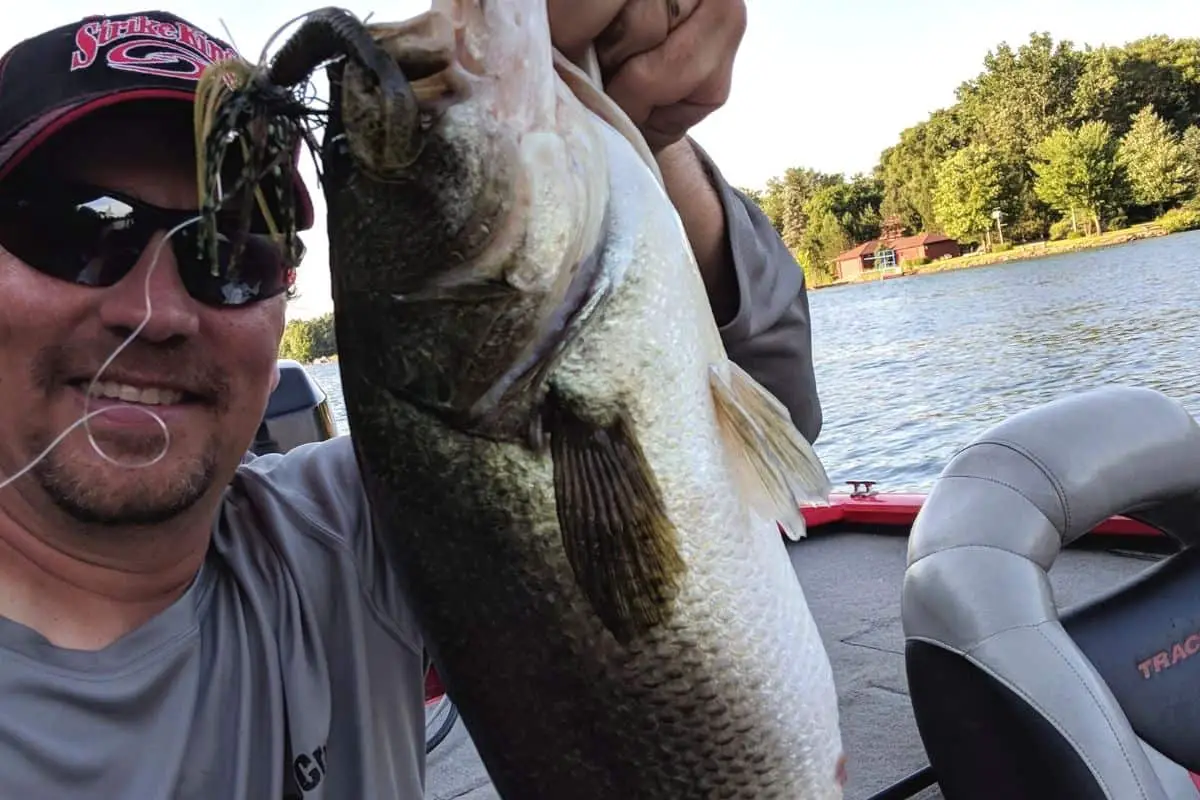Jigs have been a staple in the bass fishing world for decades. While the learning curve can be tricky, it is worth an angler’s time and effort. Jigs just catch bass. Period.
Jigs mimic a variety of prey species bass feed on. Jigs also can be worked efficiently in a variety of situations and cover where big bass tend to live. Big bass find the compact and bulky profile of a jig also imitates a meal worth eating.
Once anglers understand why jigs tend to catch bigger bass, this knowledge can be applied to help catch better fish more often.
What Big Bass Need When Feeding
Big bass are different from their smaller counterparts.
To reach that 5+ pound mark takes sharp instincts and a practice of taking in significantly more calories than what is burned.
As humans, we do the same thing. I always like to use the potato chip analogy. If you walk through the kitchen, are you more likely to grab a single chip laying on the counter? Or grab the entire bag and take it back to your recliner?
Most of us would grab the entire bag. Instinctively, it is a better use of our time. Especially if we like eating.
Big bass rely on the same process – although they do not think critically as we do. They just react.
It is common to find little bass chasing minnows all over the lake. These inexperienced predators will burn countless calories pursuing a potential meal that does not make it worth it. Rarely, will you find a big bass running down minnows in that manner.

This Tells Us What We Need to do as Bass Anglers
There are two approaches to catch bigger bass once we understand this predator vs prey relationship in terms of calories.
First, we can use bigger baits. Larger lures present a meal that is going to offer the calories needed to make a chase worth it.
Second, we can present lures as an easy meal that requires no energy expended during a chase. Lures in this category can be a variety of sizes that are used in a manner that big bass can’t resist.
How Jigs Meet Both of These Feeding Requirements for Big Bass
When a jig is paired with a plastic trailer, the bulky and compact profile has the size needed to look like a meal. A meal that is worth the effort of big bass.
A jig with this bulky profile can imitate a crawfish, baitfish like a shad, and even a panfish such as a bluegill. The presentation options with a jig are endless. Dropping, hopping, dragging, or swimming through the water column, make jigs truly versatile.
The jig can also be fished anywhere. There is not a situation where a jig cannot be used. From open water to heavy grass, to the thickest brush, jigs excel.
When used in heavy cover or around structure, the jig can present that easy meal a big bass cannot resist.
Think about a bass hanging on a dock post. That fish is sitting there and then suddenly a bulky jig drops inches from its nose.
Almost zero energy is needed to eat that prey. The bass can flare those big gills and vacuum that jig in without moving. This is the type of bang-for-your-buck meal that big bass rely on to grow to those immense sizes.
Choosing the Correct Jig for the Situation
Bass jigs come in a variety of shapes and sizes. No surprise there.
Selecting the jig that best matches what you have in front of you may seem daunting, but once head styles are understood, the process becomes much easier.

Football Head
This style is designed for rocky structure. The oblong design of the head is less apt to wedge into crevices and cracks associated with fishing rock.
A football head also provides more surface area contact with the rock. Not only does this create more “clicking” type crawfish sounds, but it also telegraphs information to the angler better.
Flipping/Pitching Head
This head design works well when dropping through brush and vegetation. The lure is meant to fall vertically and then bang and bounce its way out of the cover.
Flipping and pitching heads dominate the jig market and offer a range of line ties and weights to best match your home waters.
Heavier jigs can also punch through matted vegetation well.
Skipping Head
This head design often incorporates a flat side opposite of the line tie.
The purpose is to help provide an excellent skipping presentation. Think about the type of rock you would choose as a kid to skip across the water. The same thought process is utilized here.
Skipping jigs are used when sliding a lure deep under brush or a dock is the goal.
Swimming Head
A swim jig is one of my favorite lures. It has caught many big bass for me because it excels at the “easy meal” presentation.
A swim jig has a slender head design that does two things – first, it keeps the lure upright while being retrieved and second, it slides through vegetation well.
I choose swim jigs and plastic trailers in bluegill color patterns. Panfish almost always offer the good meal big bass require.
Plastic Trailers for Jigs
The range of plastic trailers that can be used for jigs is vast. Anglers eventually narrow it down to a few they have confidence in.
My two favorites are a Rage Menace Twin-Tail grub and a Rage Craw.
I find that both offer enough resistance that the jig can be worked slowly and still have lots of action from the appendages kicking around. But mainly, it is a confidence thing. I have caught lots of bass with these soft plastic trailers and I keep using them.
While there may be certain lures, like giant swimbaits, that target really big bass better than jigs, I have found that the jig will consistently catch a better quality fish on any water in any conditions anywhere I fish.
That’s a pretty good resume.
Tight lines. Be safe and make sure to encourage someone today. You never know how you may change their life forever.
Isaiah 6:8

